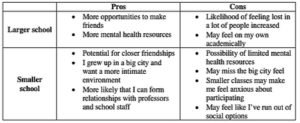By Brooke Schwartz, LMSW
If the mere mention of the holiday season brings about feelings of anxiety, uncertainty, and dread, you’re not alone. Sure, the holidays are marketed as a cherished time to give, receive, reflect, and be with loved ones. But for many, this couldn’t be farther from reality. Instead, you may find that the holiday season is actually the time of year you struggle the most with joy, love, and happiness.
The winter holidays can be tough for a number of reasons. Perhaps you don’t get the end-of-year bonus you anticipated. Maybe your uncle tends to bring up politics— and not in the civil way — after a few drinks. It could be that your relationship ends right before you’re going to introduce your partner to your family at a holiday dinner.
 Intense and unwanted emotions don’t take a vacation like many of us do this time of year. If anything, they might even be overworked and unrelenting. What’s more, most people tend to be reactive to their emotions, meaning that they try to deal with them after they’ve already arisen. As it happens, putting the emotional labor in ahead of time can help decrease the likelihood that you suffer from and act on unwanted emotions. So this holiday season, give yourself the gift of preventing painful and pesky emotions by practicing a skill called Coping Ahead.
Intense and unwanted emotions don’t take a vacation like many of us do this time of year. If anything, they might even be overworked and unrelenting. What’s more, most people tend to be reactive to their emotions, meaning that they try to deal with them after they’ve already arisen. As it happens, putting the emotional labor in ahead of time can help decrease the likelihood that you suffer from and act on unwanted emotions. So this holiday season, give yourself the gift of preventing painful and pesky emotions by practicing a skill called Coping Ahead.
Coping ahead involves thinking ahead of time about which situations you anticipate will be most difficult to tolerate this holiday season and imagining yourself dealing with them effectively. Cope ahead by going through the following steps (either in your mind or by writing it out):
1. Describe the situation and the emotion.
What exactly do you anticipate experiencing? Try to be as factual as possible (thinking, “Uncle Joe is going to ruin the night” will only serve to fuel your unwanted emotions). You may think, “Uncle Joe is going to make a comment about politics. I will probably notice my heart rate increasing and myself feeling frustrated and anxious.”
2. Name the urges.
Emotions tend to inspire urges to act — oftentimes in ways that are not in line with our values and make the situation worse. Think about what behaviors of yours are associated with the emotion you’ve identified. You may notice that when you feel frustrated and anxious with Uncle Joe, you have the urge to make comments under your breath and ask him questions such as, “How could you possibly believe that?”
3. Identify coping skills.
Ask yourself, “How can I cope with the emotion to prevent myself from acting on the urge?” Perhaps when you hear Uncle Joe say something that frustrates you, you’ll leave the room, breathe deeply, or think encouraging thoughts such as “I can handle this.” Don’t be afraid to creative here! Maybe every time Uncle Joe speaks, you see how long you can drink from your glass of water, or you repeat what he’s said in your mind in your favorite cartoon character’s voice. The goal is to do something that either decreases the intensity of your emotion or makes it harder to act on your urges.
Visualize the scenario in your mind as vividly as possible, making sure you can see yourself in the situation. Describe the scenario in the present tense — “Uncle Joe says _____________. My heart races and my jaw clenches. There’s a pit in my stomach and I feel frustrated and anxious.”
5. Rehearse yourself coping effectively.
What would it look like for you to cope effectively in that moment? Imagine exactly what you would (or would not) do. What do you say? What do you not say? What do you or don’t you think? Imagine new problems arising. For example, what if you’ve let an under-the-breath comment slip out at the dinner table? Or what if your favorite cousin unexpectedly agrees with Uncle Joe? Think through how you’ll deal with different iterations of the situation, including the worst possible case scenario you can imagine.
6. Repeat, as needed.
Going through your cope ahead plan multiple times will help you feel more prepared to cope in the situation and equipped with tools to handle other situations that may arise unexpectedly.
In practicing coping ahead by going through these steps, you’ll decrease the likelihood that you experience negative and unwanted emotions, and increase your ability to manage them if they do arise. Keep in mind that coping ahead doesn’t get rid of emotions altogether (that wouldn’t be desirable, anyway!) — but it can help you reduce the amount of suffering you experience as a result of them.
Disclaimer
This site is for information only. It is not therapy. This blog is only for informational and educational purposes and should not be considered therapy or any form of treatment. We are not able to respond to specific questions or comments about personal situations, appropriate diagnosis or treatment, or otherwise, provide any clinical opinions. If you think you need immediate assistance, call your local emergency number.
For referral information about our services, please click here or see our contact page on our website.




























